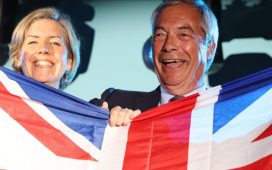We have already seen the interest rate cycle pace getting slower. Last month, both the Fed and the Reserve Bank had slowed down the pace of the rate hike. Fed came down from 75 to 50 basis points and as you know, RBI came down to 35 bps from 50 bps.
Our expectation is that inflation will continue to ease in the coming months. For example, we have seen that in last weeks alone, natural gas prices have fallen more than 30-40% because of the record warm winter in some parts of the Europe and the oil prices again have continued to hover at around $80. So both key inflation drivers are beginning to stabilise and the Covid scare which would have disrupted the supply chains, has not really come alive as yet. So if the inflation continues to slow down, there is a case for the central banks to come into a pause mode by the second quarter of the calendar 2023.
Even though we are seeing that the interest rates have actually peaked out, do you think we are in a comfortable position if we look at growth and the inflation numbers?
For India, the growth numbers are not very exciting. There is room for growth to pick up further. In June to September, we had seen the consumption spending slow down and so we have seen in the case of fresh capex. The inflation situation also is on the edge.
Inflation has come within the 6% band of the Reserve Bank but there are not any sign of inflation coming down quite significantly. It had been an uneasy situation and if that had continued to deteriorate, then that would have made people very uncomfortable. We are now in a situation where optimism is coming back. We are expecting things to improve from the current environment rather than deteriorate. So, to that extent, we can feel a little more comfortable.
I really want to focus on the fund managers’ strategies when it comes to dynamic bond funds. In November, nearly half of the dynamic bond fund schemes raised the allocation to medium to long term duration papers. What according to you could be the reasons? What are the factors that the fund manager fraternity is looking at for such a move?
By and large. everyone is expecting the long-term rates to have peaked in the current cycle. Over the last couple of months we had spoken about how 7.5% has proved to be a very strong resistance on the upside in the 10-year in India and in the US where the Fed has guided for a very hawkish stance in its last FOMC meeting. Also, in the FOMC minute, they have specifically spoken about their job becoming more complicated if the financial conditions in the markets remain easy.
The 10-year yield has fallen by almost 30 basis points in the last two days alone after the Fed meeting came out because of the weaker PMI data. So, in the current global environment, the long-term yields are refusing to go up in spite of every hawkish guidance by the central banks.
The yield curves are deeply inverted. In the US for example, the two-year yields are significantly higher than the 10-year yield. In India also, the yield curve is very flat. There are clear signs of inflation having peaked even though it may not come down very quickly. But the inflation clearly has peaked.
All the factors which were contributing to inflation have begun to moderate and therefore it is natural for the bond fund managers to extend the duration somewhat because ther is no immediate expectations of the rate coming down but if the rates stop going up, then you start to hope.
What according to you should be an investor strategy and how does medium to long-term duration help investors?
Let us say if the yield curve is very flat, then there is not too much arbitrage. Last year, we had a situation where the short term rates were extremely low. The three- to five-year part of the curve was pretty steep and then the curve was flat. Now we have the one-year bank CD rates at somewhere in the 7.70-7.75 band. Then the 10-year yield is somewhere around 7.35%. So the yield curve is very flat.
People are expecting the interest rates to have peaked. There is not any immediate hope for the rates to come down and so people want to maximise their carry yield from the portfolio and then people want to have a protection in case the interest rates began to move up.
For example, specifically to India, there could be concerns in the market or at least there is some sort of uncertainty as we approach the Budget week because even if the fiscal deficit as a percentage to GDP is reduced in the next Budget, the absolute borrowing number may still go up.
We are in an environment where credit is peaking up at a rate faster than the deposit growth and therefore there is going to be some sort of pressure on the bond yields, maybe just on account of the higher or fresh supply into the new year.
People would want some protection there and go selectively into medium and long duration funds to maximise their yields. But at this point, we are still not getting a very clear sign whether the yields are going to come down and therefore a lot of money is getting shifted to the target maturity funds.
If that goes up, then there is a kind of protection if the person or the investor continues to hold till maturity. At this point, what we see from the industry data is that the target maturity funds of 5 to 10 year bucket or 5 to 10 maturity is getting a little ahead before preference in terms of allocation before the medium and long duration fund, for which in the next couple of months, a stronger environment may emerge if the inflation does indeed come down.
If we look at the scenario, don’t you think that the overall credit growth and the fiscal deficit remains elevated and which means the government and private sector would need resources and this will maintain pressure on short term rates, making them more attractive? If one wants to park money, are short to medium term papers something that they can look at?
Right now, with the overall outlook that the rates have peaked and the RBI is close to the peak of interest rate cycle, the entire yield curve is looking reasonably attractive. The short term rates have already gone up because of the strong demand from the banks. For example, the one-year treasury bill is now at about 6.9% and the one year bank CD rates are somewhere around 7.7%.
So there is a full 80 bps spread which is almost 10% more than the base rate of 6.90. We have not had this kind of a spread in the last three years since the RBI started injecting liquidity post Covid. So these spreads have become attractive now. They are in a value zone and so right from the short end of the curve to the long end of the curve, it looks very fairly valued.
People should now invest in line with their investment horizon and risk appetite rather than choosing the shorter end versus the longer end in view of their rate view. If I am a long term investor and if I have the money for three to five years and can absorb volatility, I would rather get into a medium to long duration fund.
If I do not have money for a longer period, then that is an option which is redundant and irrelevant. Therefore I will go at the shorter end of the curve. So at this point, the value proposition across the curve is pretty compelling in my view.
Growth is definitely a concern right now, especially looking at the trade deficit and the fiscal deficit. Also the currency is weakening. Do you think this is going to be a mood spoiler and if this continues, is it going to get us into a deeper problem?
Growth is a concern and which is why if the inflation continues to be high, growth has to take a back seat because inflation can then spiral into other challenges. We had a situation where growth was very badly affected because of the Covid lockdowns and inflation was low. Then we had a situation in the last one year where inflation was just spiralling up and the growth was also good. Now we are coming to the next round where inflation will possibly begin to ease recede.
We are already seeing the pressure on growth and therefore the switch from focus on inflation to growth will intensify in the coming two quarters and that is why we think that the Reserve Bank will go on a pause mode. We have already seen two dissents in the last monetary policy; one dissent was for not hiking the rates by 35 bps but by a lower margin and the other dissent was for shifting the stance to neutral or maybe hawkish, we do not know what exactly it was–but to give a clearer communication to the market, that maybe we are closer to the peak of the rate cycle. So growth is going to draw more attention once inflation makes space for policymakers.
Policy, what are you predicting or analysing?
I am clearly expecting inflation to begin to ease because the numbers are very encouraging. The natural gas price which was supposed to be the biggest source of concern between Europe and Russia in the middle of January, has turned the other way. In September or June of 2022, we would have expected a full blown crisis right now but the European economies have found alternate sources of natural gas. Norway has come up as a big supplier, the US is helping in its own way.
What matters is that the natural gas prices are now lower than what they were one year back. Same is the case with the crude oil prices, aluminium or any commodity. So the contributing factors to inflation have eased and therefore inflation should begin to come down. It is not that inflation will crash to the target below the central banks have. Thebthe other point is that even if inflation comes down, central banks will still be a little guarded because they got it completely wrong last year. Therefore, we are looking at the environment improving which therefore encourages increasingly more aggressive positioning in the fixed income space.
What kind of announcements are you looking at in the Budget?
: Broadly speaking, there are two tracks which the government has been focussed on. One is the rural economic focus and the second is the capex revival. I expect a number of steps to be announced both for the further stimulus to the rural economy and for the capex continuation. The government already has a large number of projects in the pipeline on the capex front on ports, roads and so on and then they have announced multiple PLI schemes which has drawn a lot of the foreign direct investment. So on that front, I think the government will provide further stimulus.
On the rural side they may announce a few more schemes for the crop insurance because that is one area where we have not seen enough progress and then technological upgradation of agriculture because we had a phase where the government introduced farm bills and then because of the developments, the farm laws were withdrawn. That means there is a gap there, a vacuum where the technological upgradation of agriculture still has to commence in earnest.
We have seen how digitisation has revolutionised the financial services space. If you look at UPI as a case study, same kind of revolution can happen on the agricultural side and I am sure that this time the government will introduce measures which will circumvent the farm laws because that had become a political challenge but the government’s intention is to still bring those advantages and benefits to the poor farmers and therefore I am sure that the government will introduce measures which will address the issues while keeping in mind the challenges that the withdrawal of the farm bills had posed.








